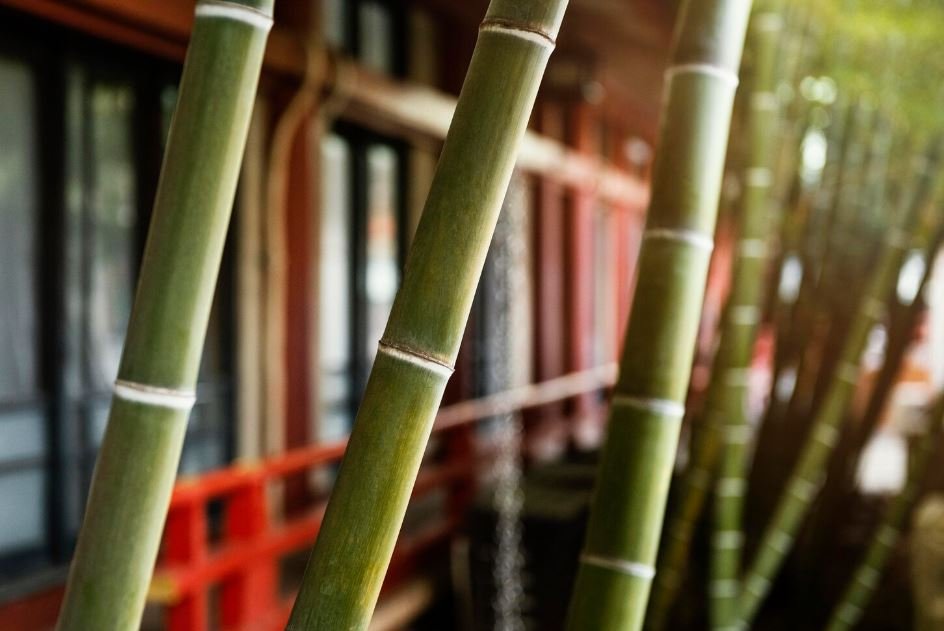
Bamboo is quietly gaining traction as a competitor to steel, one of humanity’s most dependable materials, in labs, building sites, and design studios. In addition to its inherent strength, engineers are drawn to its sustainability because they see in its hollow stalks a material that is incredibly effective, infinitely renewable, and remarkably flexible enough to meet our ever-changing needs.
Experts have started referring to bamboo as the “green steel” in recent years. According to studies, its tensile strength—the ability to withstand stretching or breaking—can be as high as 28,000 pounds per square inch, which is surprisingly comparable to mild steel. Scientists are investigating methods to engineer bamboo that functions as dependably as the metals that predominate in contemporary construction by utilizing this inherent ability.
| Category | Details |
|---|---|
| Material Overview | Bamboo is a rapidly renewable plant known for its exceptional tensile strength, flexibility, and sustainability. |
| Tensile Strength | Around 28,000 psi — nearly comparable to mild steel, which averages 36,000 psi. |
| Key Advantages | Lightweight, renewable, corrosion-resistant, and carbon-negative. |
| Limitations | Lower compression strength, reduced malleability, and vulnerability to moisture or pests if untreated. |
| Current Innovations | Engineered bamboo composites like BambooTECH developed for modern construction. |
| Environmental Benefits | Absorbs 30% more oxygen than trees and captures large amounts of carbon dioxide. |
| Ideal Applications | Low-rise buildings, eco-resorts, temporary housing, and disaster relief structures. |
| Research Institutions | Swiss Federal Institute of Technology, MIT, and the Institution of Civil Engineers. |
| Economic Impact | Reduces building costs in developing regions by up to 40%. |
| Reference Source | Interesting Engineering – https://interestingengineering.com/news/bamboo-replacement-for-steel |
The change is especially novel because bamboo has benefits that steel does not. It doesn’t need fertilizer, grows to maturity in three years, and naturally regrows after harvest. As a carbon sink, each grove releases more oxygen than trees while drastically lowering atmospheric CO₂. The environmental case is very clear: bamboo is a carbon-negative alternative because it absorbs carbon during growth, whereas the production of steel produces about two tons of CO₂ per ton of material.
Another advantage of bamboo is its adaptability in areas vulnerable to natural disasters. During storms or earthquakes, its fibers absorb stress by bending without breaking. It has already been applied by engineers in the Philippines and Nepal to create resilient home designs that fared exceptionally well during seismic activity. Because of its inherent flexibility and low weight, bamboo is especially useful for buildings in high-wind or earthquake-prone locations.
When sheer compressive strength is needed, steel still has an advantage. High-load infrastructures, long bridges, and skyscrapers depend on steel’s special density and malleability, which bamboo cannot yet match. Additionally, untreated bamboo is vulnerable to insects, fungi, and moisture, all of which can gradually erode it. By creating treated and laminated composites like BambooTECH, which are designed to be incredibly resilient to water and wear, researchers are tackling these problems.
Scientists at universities like MIT and ETH Zurich are compressing bamboo fibers to create dense panels that are more durable and rigid than conventional softwoods. Densification is the process that greatly increases the plant’s resistance to moisture and deformation. Bamboo’s inherent low environmental impact is preserved while it is significantly enhanced for industrial use by these treatments.
The ramifications for architecture are extensive. Bamboo’s structural and aesthetic potential is demonstrated in Bali’s Green School and the eco-village that surrounds it, which was created by Elora Hardy’s IBUKU studio. Its organic curves and sweeping arches demonstrate that eco-friendly materials can be incredibly beautiful. Bamboo is now a high-performance material that rivals steel and concrete in terms of creative flexibility thanks to architects’ strategic collaborations with regional craftspeople.
The argument for bamboo is just as strong from an economic standpoint. While bamboo grows abundantly in tropical climates, steel is expensive to produce and import for developing countries. Countries can lessen their dependency on imports, generate employment, and encourage sustainable growth by developing domestic bamboo industries. As part of their housing and climate initiatives, the governments of Kenya, Colombia, and India are already providing funding for bamboo construction projects. The outcomes have been extremely cost-effective and environmentally beneficial.
It is increasingly being used outside of architecture. Bamboo is being used by designers to create furniture, automobile components, and bicycles because of its lightweight nature and durability. Some businesses have replaced carbon fiber in certain applications by using it in sports equipment composites because of its renewable qualities. From mass-market sustainability to luxury design, the plant’s versatility is astoundingly broad.
Celebrities and environmentalists have contributed to the revival of bamboo. Bamboo buildings at Leonardo DiCaprio’s eco-resort in Belize are made to cause as little disturbance to the environment as possible. In the meantime, Japanese architects like Kengo Kuma have combined traditional aesthetics with contemporary engineering by integrating bamboo into public structures. These well-known endorsements support bamboo’s positioning as a futuristic material rather than a rustic one.
Experts are still wary, though. Bamboo will probably enhance steel rather than completely replace it. The use of steel for compression components and bamboo for tension members in hybrid construction techniques is growing in popularity. This combination of technology and nature feels especially forward-thinking, resulting in stronger, lighter, and more sustainable buildings.
When it comes to sustainability, bamboo provides an incredibly efficient means of achieving climate goals without impeding advancement. Global environmental strategies are perfectly aligned with its potential to provide affordable housing, restore degraded land, and reduce emissions. It is a step toward a smarter, greener industrial era rather than a sentimental return to nature in the context of fast urbanization.
What bamboo represents—a reconsideration of strength itself—may be the most striking feature of this argument. It challenges us to envision a building sector based on regeneration rather than extraction. The question may change from “Can bamboo replace steel?” to “How soon will we be ready to build differently?” as research and materials improve.
If experts are right, the solution might not be far away. The rise of bamboo is more about redefining progress—quietly, effectively, and sustainably—than it is about completely replacing steel. It serves as evidence that resilience can literally be built from the ground up, much like a living scaffold.
